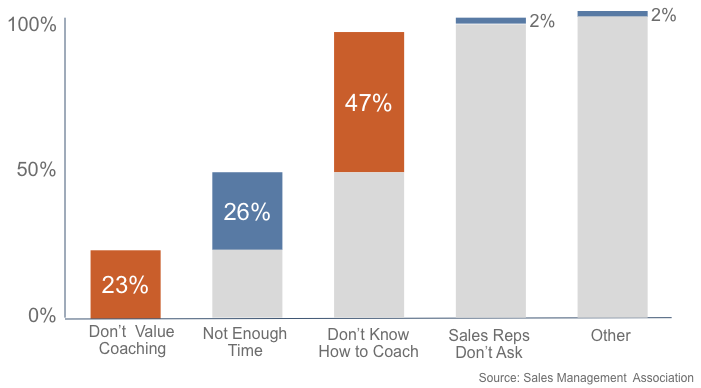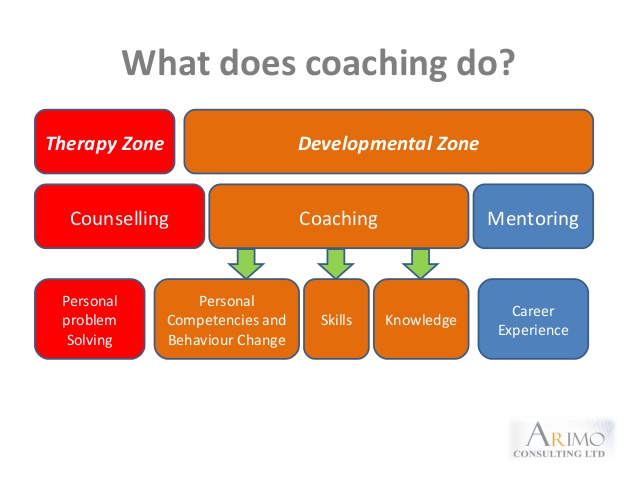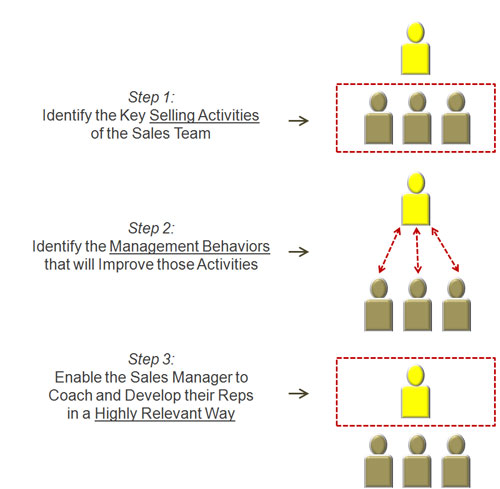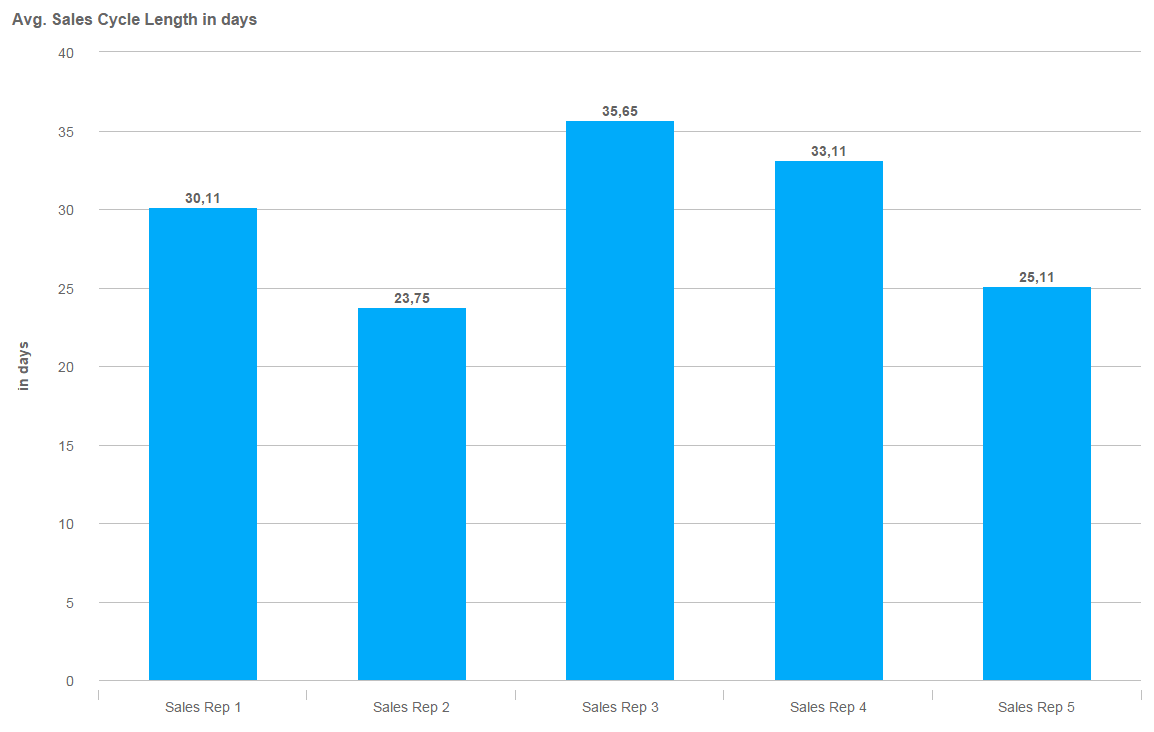Post summary:
- To coach your sales team, or not to coach?
- How to use CRM Software to overcome sales challenges
- The difference between managing, training and coaching
Are you throwing away 70% of your deals?
You might be, if you don't find time to coach your sales team.
Why is coaching so important?
Well for starters, the research behind coaching sales teams is quite impressive.
According to a recent study by Knowledge Tree, sales representatives receiving at least three hours of coaching per month exceed their selling goals by 7%, increase revenue by 25%, and increase close rate by 70%!
Who wouldn’t want those results?
To coach, or not to coach? That is the question.
Do you know what happens when you do not coach your sales team?
Here’s the possible outcome: they do not gain new skills, do not improve and continue to repeat the same sales mistakes in their process without even realizing it.
The bottom line – sales performance suffers.
But not to worry If you are not yet coaching your team, you are not alone in this. In fact, 73% managers spend less than 5% of their time coaching their sales teams, the TAS Group claims.
Every sales manager knows that they have to spend some time training and working with their staff so they continue to improve. However, managers frequently neglect coaching for other duties.
And so it will come as no surprise that the two most common sales coaching challenges are these: sales managers feel that they don’t have time to coach and they don’t have access to the tools and resources that can help them get the most of coaching.
Sounds familiar, doesn’t it?

How to use CRM Software to overcome these challenges?
You are responsible for a range of tasks such as strategic planning, managing a sales pipeline and forecasting. In addition, more often than not you might find yourself rolling-up your sleeves and jumping in to help every time a sales rep has a problem.
However, there’s a solution to spending so much time putting out fires. A constant effort to coach and develop the sales team will be rewarded: sales reps will sell more and will solve more of their own problems so you won’t have to.
Undoubtedly, good sales coaching must be backed up by numbers and data. In fact, sales coaching is a meaningful analysis of data. What you get is insights, followed by tips on how to improve.
Using CRM software as a tool for coaching might have never crossed your mind, but this is actually a great tool to leverage your team’s numbers to grease the wheels of coaching sessions and achieve greater sales performance.
The difference between managing, training and coaching.
Before we start to delve into ways of coaching your sales team to success, it’s important to clear up what sales coaching really is and what it’s not.
It’s common to mash up the meanings of managing, training and coaching when dealing with the sales team. These are, however, very different.
How? Let me explain.
Training imparts specific skills or knowledge. You train your sales people to learn the new process or to do a specific task, they haven’t done before, while managing and coaching are a bit more complex.
Whenever one of your sales reps brings you a problem, you have a tough decision to make – will you jump in and solve it yourself or will you help your employee discover a solution?
No matter how tempting it would be to choose the managing option and fix the problem yourself, coaching your sales rep to analyze the situation and find alternative solutions to the problem will do more good in the long run.
With coaching, you will not be able to manage the results, but you will be able to manage the behaviors of your sales reps that lead to the results. This is how, with your help, they will gain the skills and the knowledge of how to make their own decisions in order to become more effective.

How to get started with sales coaching?
If your sales reps don’t come to you with a problem, it doesn’t mean they don’t have one. Whether experienced or not, all reps need polishing from time to time.
However, you have to agree that telling your sales reps that they have to sell more or they have to reach their quota is far away from sales coaching.
The sales revenue is the most important goal, but instead of adopting such a results-oriented mind-set with your sales reps, it’s even more effective to focus on the process. To do that you need to know not only the results your sales reps achieved, but also how did they come up with such numbers.
CRM software is the best way to have full visibility of your sales reps performance and their pipelines.
Here are several ways you can use CRM to coach your sales team:
Use CRM as an activity tool
When CRM data shows that there has been a change in one of your sales reps’ performance when compared to the previous period, this can serve as a great starting point for your sales coaching session. If the numbers are different you can compare what the sales rep did differently to get different results.
To do that you can analyze these activities of a sales rep:
- What kind of activities has the sales rep engaged in the previous period? Was it phone calls or e-mails or other activity, and how many of them were performed?
- How many of these activities ended up with responses?
- What is the rate of contact – how many and what types of activities are logged against a lead to qualify it as an opportunity?
- After the lead was registered as an opportunity, how many follow-up activities did it take to move the opportunity to the next stage?
By analyzing these key points you can actually see where your sales rep is experiencing problems.
When you see the number of activities he or she has engaged in, you can hypothesize the reason for under-performing. For example, maybe the reason is the lack of activities and your sales rep simply needs to be more persistent into converting leads to opportunities?
If you see, that there are enough activities registered with no result then this might be a sign that the sales rep needs additional training on leading the sales conversations and you might want to participate when he or she is making a phone call or help him write effective sales emails to get them back on track.
Finally, there is a possibility that the sales rep is not as good at opening doors as others and maybe you can assign the rep on closing opportunities instead chasing leads.
If you see that sales rep is successful in turning leads into customers, maybe the reason for not hitting the quota is lack of follow-up on the prospects in the later stages.

If you have all of this data at hand, you can compare different periods and you can see which activities the sales rep made that led to a difference in numbers, discuss the reason for such behaviors and decide on further activities that should lead to more business.
Use CRM as a focus tool
When you look at your team’s pipelines, you might often discover that some opportunities get more attention and some of them seem to be stuck in one stage forever.
Every sales rep is limited in terms of how much effort and resources they can pour into closing each opportunity. They only have so much time in a given day, month or quarter. Therefore, it’s essential to prioritize opportunities and to focus on the most important and urgent ones.
However, sometimes sales people are not working on what you think their priorities should be. That’s where you can start coaching them towards concentrating their efforts to the more productive opportunities.
To do that you might want to consider these factors:
1. How many open opportunities each team member has in the pipeline?
This is an important factor to consider to start optimizing the pipelines of your team. Let’s say the number of opportunities worked by one rep is significantly higher, then there’s a danger some of them will be left unattended. If some sales reps have less opportunities, there’s a possibility they will not make quota.
2. How are the opportunities in the pipeline moving from stage to stage?
How many opportunities stay too long in one specific stage and is it longer than the winning opportunities? If winning opportunities stay in one stage for a couple of weeks, an opportunity that has been in there for a couple of months is less likely to be closed and maybe shouldn’t be held as a high priority.
Additionally, you can see how sales reps are moving the sales forward. If one of them has a dramatic drop-off from the first stage to the second, there’s an alert that some kind of training and help is required in that stage.
3. How many opportunities have been delayed that should have been closed?
Shifting the closing date many times could indicate that the prospect is not ready to buy or just playing your rep around with no intentions to buy at all.
4. How many opportunities are there that are worth significantly more than your typical deal size?
Deals that are worth more tend to have lower win rates and longer sales cycles. These deals require special treatment. You might want to consider giving these opportunities to more experienced reps. On the other hand, this might be also a chance for the not-so experienced members of the team to win their first big deal, with your guidance and help, of course.
The key to choosing the right opportunities is to focus on finding the balance between the level of effort and the likelihood to close. For example, opportunities that haven’t been attended by your sales reps for a while are less likely to close and should be heavily focused on to save the deal or be ditched.
By having the visibility into your team’s pipelines and asking your sales reps to give you the reasons for choosing some opportunities over another, you will be able to set the priorities and shift your reps efforts towards them.
Use CRM as a feedback tool
After each coaching conversation, you can determine which CRM data to watch as a key performance indicator of sales success. This way you have clear measurable feedback on your sales reps improvements.
This might include asking your sales reps:
- What CRM data would they expect to change when they engage in a new sales action?
- How different are their numbers from their last coaching session and what will they do to improve them?
- Do they think that the effort they put in is worth the change in performance?
After talking to your sales reps you can decide how to measure their results in order to give them the feedback next time. Here are some suggestions for key points to measure:
1. Win rate.
This shows you how many wins your reps get after getting prospects to the opportunity stage. If they have 30 opportunities and close six deals, they demonstrate a win rate of 20%. This number can be easily compared to the rates of previous periods or to the rates of other members of the team. Moreover, it clearly shows the progress or decline in performance and is an indicator if your sales reps are improving.
2. Average sales cycle.
This is the number of days it takes your sales rep to move the opportunity to a closed deal. This is one of the points to look at if you want to check whether your sales reps are making progress. If they’ve made some changes to their sales process and they do work, the sales cycle should get shorter. If there were no significant changes made and the sales cycle is jumping around, that’s a red flag.

3. Size of closed deals.
This is another metric indicating how well your sales rep is playing. Even if the win rate is high but the deals are small, this might be a problem. Unless sales rep is capable to close these deals within very short sales cycle.
As you see there are many ways to slice and dice your data to leverage it not only to evaluate your team’s performance, but to also provide valuable feedback and guidelines for further improvement. Depending on the problem area of each sales rep, you can monitor different metrics and use them as a foundation for your coaching sessions.
Conclusion
Sales coaching is one of the most effective ways to optimize sales team performance and increase quota attainment.
So, be sure you make time for coaching!
CRM solutions can help provide deep insights into how your team’s doing and compliment your coaching, with the answers you need and when you need them. As the software allows you to see the historical trends of the pipeline activities, you can determine what works and what not to coach your reps to make the best use of their time.
And finally, be one step ahead of the game. Don’t wait until your sales reps have a problem, because at this point it may have left them feeling demotivated. Dedicate time to keep in touch with your team, because the effort you put in will determine the rep’s willingness to go the distance.
What tips do you have to coach your sales team? Let me know.
P.S. Once you have coached your sales team, you can begin to track KPIs. Download the free "sales KPI guide" to get started.




